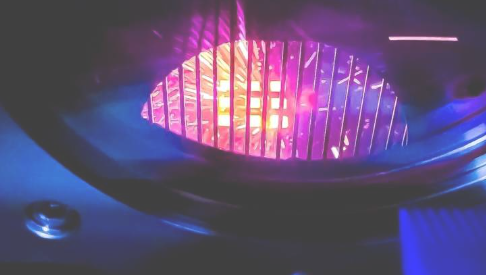
In a groundbreaking advancement in materials science and additive manufacturing, researchers at Oak Ridge National Laboratory (ORNL) and the National Energy Technology Laboratory (NETL) have successfully developed and 3D printed the lightest crack-free alloy capable of withstanding extreme temperatures without melting. This novel alloy is a game-changer in industries where components must operate in ultra-high-temperature environments, such as aerospace and energy. The alloy is designed to maintain its structural integrity at temperatures exceeding 2,400 degrees Fahrenheit, a milestone that opens new possibilities for manufacturing more efficient turbine blades and reducing the carbon footprint of gas turbine engines.
The ability to print high-performance alloys that can endure such extreme conditions without cracking has long been a challenge. This new development represents a significant leap forward in the field of additive manufacturing and could pave the way for lighter, more heat-resistant components that are essential for industries that rely on high-performance turbines, such as aviation and power generation.
The Need for High-Temperature, Lightweight Materials
Modern gas turbine engines, like those found in airplanes and power plants, operate at increasingly higher temperatures to boost efficiency. However, high-temperature environments place extreme demands on the materials used to construct critical components such as turbine blades, which must retain their strength and durability under these harsh conditions. Traditionally, superalloys based on nickel or cobalt have been the go-to materials for such applications due to their ability to withstand high temperatures. But even these advanced materials have their limits, especially when it comes to operating above 2,400 degrees Fahrenheit.
As engines become more advanced, there is a growing need for materials that can operate at even higher temperatures without compromising performance. At the same time, these materials need to be lightweight to improve fuel efficiency and reduce emissions, particularly in aerospace applications. The challenge is finding a balance between high melting points, low density, and the ability to be additively manufactured without cracking.
This is where the new alloy developed by ORNL and NETL researchers comes into play. By combining seven different elements into a niobium-rich complex concentrated alloy, the research team has created a material with a melting point at least 48% higher than traditional nickel and cobalt superalloys. This significant increase in temperature resistance makes the new alloy a promising candidate for applications in which components must withstand extreme heat without melting.
The Science Behind the Breakthrough Alloy
The researchers at ORNL and NETL used cutting-edge additive manufacturing techniques, specifically electron beam melting, to develop and print the new alloy. Electron beam melting is a type of 3D printing process in which a high-energy electron beam is used to selectively melt metal powder layer by layer to form a solid object. This process allows for the creation of complex geometries that would be difficult or impossible to achieve using traditional manufacturing methods.
One of the biggest challenges in printing high-temperature alloys is preventing cracks from forming during the printing process. Metals tend to expand when heated and contract when cooled, and these thermal stresses can cause cracks to form in the material, compromising its structural integrity. Previous attempts to print high-temperature alloys, such as those based on tungsten, resulted in components that were either too heavy or prone to cracking.
However, by carefully fine-tuning the electron beam melting process, the researchers were able to print test parts of the novel niobium-rich alloy without any cracks. This is a significant achievement, as it demonstrates that the material can be additively manufactured while maintaining its structural integrity at ultra-high temperatures.
The Advantages of Niobium-Rich Alloys
The key to the success of the new alloy lies in its unique composition. The researchers combined seven elements, including niobium, to create a complex concentrated alloy with exceptional thermal and mechanical properties. Niobium, a refractory metal, is known for its high melting point and ability to retain strength at elevated temperatures, making it an ideal choice for high-performance applications.
Compared to traditional superalloys based on nickel and cobalt, the new niobium-rich alloy has a melting point that is at least 48% higher, allowing it to operate at temperatures that would cause other materials to fail. In addition to its high temperature resistance, the alloy is also lightweight, which is a critical factor in aerospace applications where every pound of weight saved translates into improved fuel efficiency and reduced carbon emissions.
According to Saket Thapliyal, one of the lead researchers at ORNL, the development of a high-temperature alloy that is both lightweight and crack-free is unprecedented. “No one has been able to develop and print alloys with such a high melting temperature and low density without cracks before,” Thapliyal explained

Comments